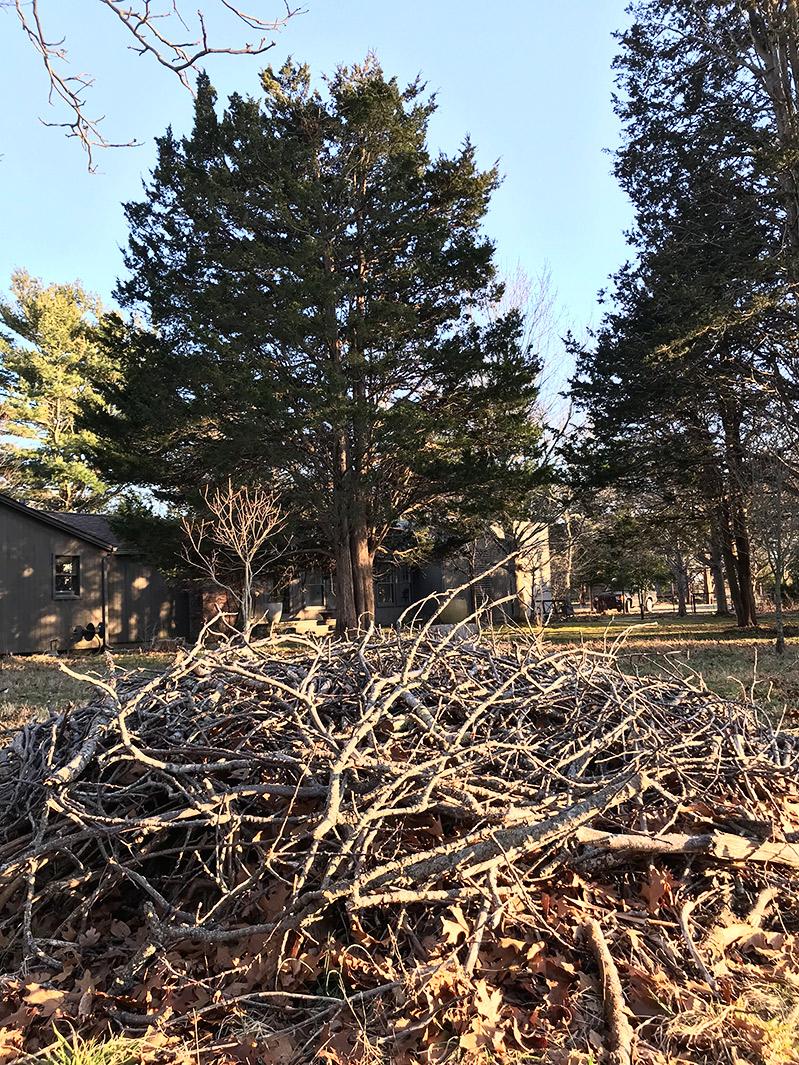So, you read the “On the Wing” column weekly, like birds, and want to make your backyard bird-friendly. To do that, you’ll need to think like a bird when making landscaping decisions.
Put simply, if your backyard is going to support birds, it needs to provide food, water, shelter, and places to nest. Let’s focus on food here, because by taking care of that, we also can take care of aspects of sheltering and nesting.
The Cornell Bird Academy course “Growing Wild: Gardening for Birds and Nature” offers a lesson about oak trees as one of the best bird-supporting trees you can plant. One oak tree can produce 10,000 acorns. Another important food that oak trees produce, incidentally, are caterpillars; they host more than 500 caterpillar species. According to the course material, “the most important type of insect for feeding birds is arguably the caterpillar,” particularly for babies in the nest.
Basswood and chokecherry trees are also listed by the Bird Academy on their “favorite plants” list. According to Matt Hartline, a certified master arborist with Bill Miller and Associates in Water Mill, another good one is our native black cherry. “It’s beneficial to birds because the fruit is sought-after and they are a host to native insects and caterpillars,” he said.
A quick way to add nesting spots, according to Bruce Horwith, of Wild Bird Crossing in Bridgehampton, is nesting boxes. Choosing a box with a 1.5-inch opening “can be used by most birds that will nest in a yard: wrens, chickadees, titmice, or nuthatches,” he said.
It’s important when you’re birdscaping to support “vertical diversity” in your yard. Birds don’t just need trees. So, groundcovers and a shrub level are also essential ingredients, and adding trellises of different heights can add immediate vertical diversity. A great vine to climb that trellis could be trumpet honeysuckle, another of the Bird Academy’s favorites. Honeysuckle provides nectar for birds and is a great way to attract hummingbirds.
Switchgrass and little bluestem are Cornell’s favorite grasses. Both provide seeds for birds (if you leave some areas unmowed) and little bluestem is also container friendly. For shrubbery, arrowbush and highbush blueberry are both great, because they provide fruit and insects.
Birdscaping can also be about things you don’t do. It’s important that you don’t light your trees up at night. Nocturnal birds rely on dark trees, and even diurnal birds need darkness. If you got caught up in that fad during the pandemic, it’s okay — just switch them off.
Don’t spray pesticides; insects are food that birds need to raise their young and survive. When you spray for ticks or mosquitos, you’re incidentally killing off pollinators, caterpillars, and other beneficial bugs. Support insects by cultivating plants that are going to attract them. According to Cornell, white meadowsweet and crabapple trees are insect supportive. Another simple way to help insect populations is leaving portions of your lawn unmowed.
Birdscaping can also be about revenge. Hate your neighbor? Maintain a “debris pile” in view of their kitchen.
“Our need to control is out of control,” says Edwina von Gal, the noted landscape designer and founder of the Perfect Earth Project, whose “2/3 for the Birds” campaign asks people to “make a simple commitment: plant two native plants for every three and use no pesticides.”

Decay is part of life and can be beautiful. Brush, dead plants, and decaying logs are all necessary bird habitat and provide food. On her property, Ms. von Gal has piles of sticks arranged into rough circles called “hugels.” They slowly break down organic matter, and the soil that results is perfect for planting. In the meantime, they’ll be great living spaces for insects, sparrows, and wrens.
Speaking of debris, leave your leaves! There’s a big debate all over the East End about what daytime hours gas-powered blowers should be used. Birds would rather you not use them at all. Leaf litter provides habitat for both birds and insects, so rake them into garden beds around plants and trees, but don’t remove them all.
It will also help to speak with your landscaper. Communicate very clearly that you’re okay with some disorder. You too can help ease the leaf-blower debate on the East End.
According to the American Bird Conservancy, online at abcbirds.org, “up to 1 billion birds die after hitting windows in the U.S. each year.” Since your house is probably the largest structure on your property, make it more avian-hospitable by adding acopian bird blinds (Google it) to your windows. They break up reflections, alerting birds of their presence to prevent collisions. You don’t have to put them on every window — just the most problematic ones.
Finally, it can be about subtraction, too. Learn which plants on your property are invasive and remove them. Also, subtract your outdoor cat. Kitty should live inside now.
So, take a second look at your friend’s carpet of sod surrounded by a wall of non-native Leyland cypress trees. It’s sterile and boring, maybe like your friend. Worse, to a bird, it’s a desert. Be backyard bold. Make a life-filled, beautiful mess back there.

